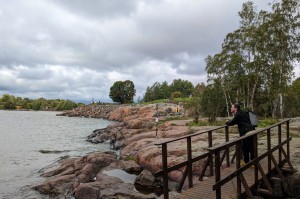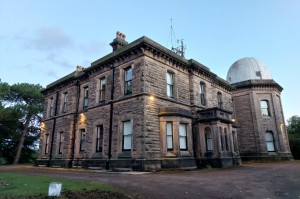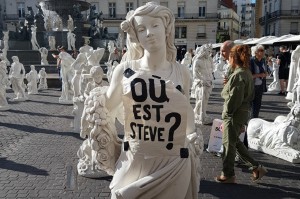Field Trip: Riflemaker and Matt’s Gallery, London
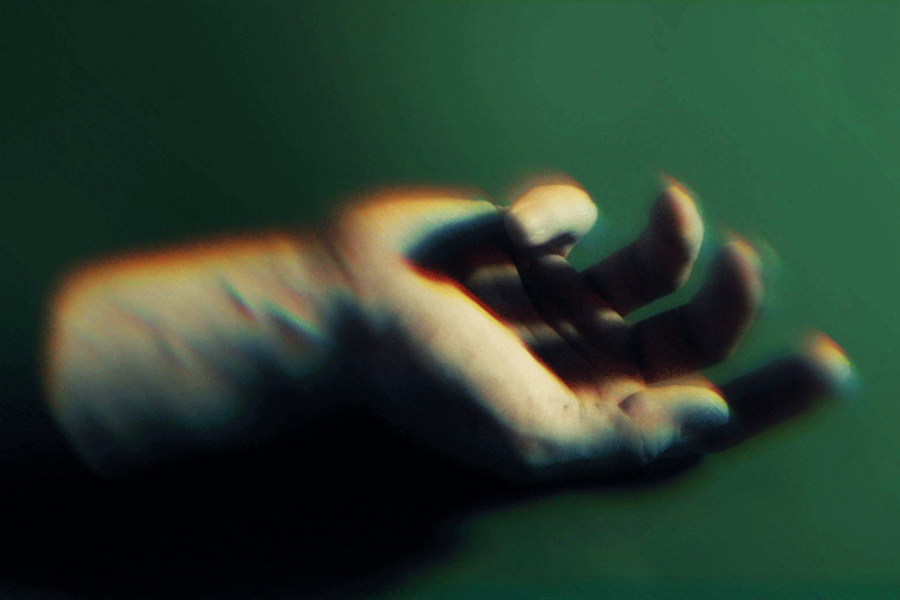
Drawing inspiration from independent art spaces in London, Laura Robertson asks why smaller cities like Liverpool aren’t providing enough of a varied art offer…
Think of anything missing from the Liverpool art scene? Ask artists, curators and art orgs what they’d like to see more of, and they’d probably say new art spaces. No, not more Bluecoats, or FACTs, or Tates; but small, unpredictable spaces, run by artists or freelance gallerists. Places that don’t have a big education agenda; places that support emerging artists through short, innovative exhibitions, or residencies, or even sell their work for them. What was the last venue you remember popping up like that? The Royal Standard? Fallout Factory? Stay in Liverpool and you start to get used to that as being normal. Venture into other art cities like Birmingham and Glasgow and you start to see what’s missing.
It was with this thought in mind that I accompanied a group of first year BA Fine Artists to London recently. The aim was to see as many independent galleries as possible over two days, avoiding the big draws like Tate Britain (even though I was dying to see Ruin Lust), and instead getting what we hoped would be an alternative view. Important, firstly, to get a grip on how different spaces work; secondly, to see what options there are for graduate practicing artists; and thirdly, simply to see if we could discover something exciting.
With a big itinerary put together for us by artist and lecturer Chris Evans — including The Showroom (a collaborative and process/artist-driven art space), Lisson Gallery (one of the longest-running international contemporary art galleries in the world), Sadie Coles (a key gallery in the Young British Artist movement), Raven Row (old silk shop-turned gallery owned by the supermarket heir Alex Sainsbury), and a quick stop off at the Serpentine — it was going to be a whirlwind trip. Add to that, a reminder that most of the students had never visited London before (imagine 40 people getting to grips with the Tube for the first time).
I won’t describe every venue. In summary, there were two highlights for me; two small locations, each with an utterly unique character, driven by determined owners, who effectively pushed their artists work onto an international platform and took risks with presentation and ideas.
The first was Riflemaker. A completely accidental stop off (it was around the corner from Sadie Coles, whose Helen Marten solo show of sculpture and painting incidentally left me cold), this intimate former gunmaker’s workshop has been described by Vogue as ‘the coolest art space in town’, and is the opposite of a white-walled gallery space. Taken over by gallerist Virginia Damtsa and composer Tot Taylor in 2004, the building was built in 1712 and has kept its original features — including the Riflemaker’s sign above the doors, a rickety interior clad in peeling, wooden paneling, and even the occasional gunshot hole.
It was a befitting home to a small William Buroughs retrospective, celebrating what would have been his 100th birthday; odd, colourful spray-paint work on boards and manila folders, hung on walls and in traditional wood/glass vitrines; ‘stencil’ drawings and wooden sculptures; and some really curious self-portraits with photomontage that I’d never seen before.
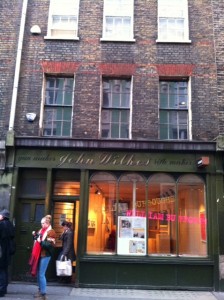
Other exhibiting artists have included Liliane Lijn, Marta Marcé, Gavin Turk, Francesca Lowe, Judy Chicago and Christopher Bucklow; artists get good national press, in addition to promotion through exhibitions and art fairs. The small gallery team courts a loyal client base who are willing to spend anything from £5,000-25,000 for one artwork. This may be explained by location. “Soho is a hub for creativity” Damtsa notes; “the film, music and advertising industries are all based here and the gallery has become a bit of a meeting point.”
Onwards to Matt’s Gallery. We were lucky enough to get a talk from owner Robin Klassnik, who started the space in 1979, and is the outlandish driving force behind each exhibition. Inviting artists to work in this Mile End warehouse for an unspecified amount of time, Klassnik admits he “bothers” and provokes the artists daily until something interesting happens. Imagining that this could be an absolute nightmare, depending on your personality, I was intrigued to know how Klassnik selects the art and artists he wants to work with.
“If it touches me, if it makes me think about something, if it transports me, if I go home thinking, ‘Oh, that was quite interesting’; I might even think it was bad. I think I’ve shown artists who I think are quite bad, but maybe I can extract something out of them which maybe can be turned into goodness. You have to be moved.”
I ask whether there has ever been a time when he’s cancelled a show, because the collaboration just hasn’t worked or has gone wrong in some way?
“Yes. There have been two or three artists we’ve started with, and the chemistry wasn’t good. Basically it’s about chemistry; I’m here all the time, interfering all the time, and the artist is here… the idea wasn’t working. It was better all round to cancel the exhibition. It doesn’t happen much. Sometimes the failures are better than the successes. It’s about making, about doing, and about being here. You’ve got to be brave.”
Supported through the Arts Council England and donations, Matt’s Gallery also occasionally sells work, sometimes for up to £150,000. It’s characteristic for Klassnik to work with young unknowns, as much as with established artists; resulting in discoveries of real talent and a host of international awards over a 30 year period.
The latest is Benedict Drew (main image); Klassnik visited his graduate show, and he now has an incredible solo slot at the gallery. It manages to channel 2001: A Space Odyssey, Blackpool, The Adams Family, and astronaut Chris Hadfield; as well as green slime, glowing orbs, water droplets, and twitching, detached hands.
Attempting ‘to make sculptural the absurdity of a life spent staring into a screen and the social anxiety induced by ‘smart’ objects’, the use of space was terrific (utilising clever stages, lighting and wall coverings to change the feel and look), and it’s probably the most exciting and immersive exhibition I’ve seen in ages. I’m still processing it.
So what conclusion to draw from these two independent, commercial galleries? I’m not saying that we need to establish a traditional art market in small cities like Liverpool, or replicate London commercial models in any way. The opposite, in fact; I think we’d all welcome a fresh look at projects that seek to sell or produce new work (see CAVE Art Fair or Castlefield’s New Art Spaces). What I am saying that if we want to see a rich and varied art offer outside London, and present an alternative to the big institutions, then independent spaces need to be started and supported, in whatever shape or form. As long as something’s happening.
I hope my students were inspired enough to consider starting their own ventures come graduation time.
Laura Robertson
William Buroughs 100 shows at Riflemaker, 79 Beak Street, Regent Street, London W1F 9SU until 29 March 2014, free entry
Benedict Drew: Heads May Roll shows at Matt’s Gallery, 42-44 Copperfield Road, London E3 4RR until 20 April 2014, free entry



